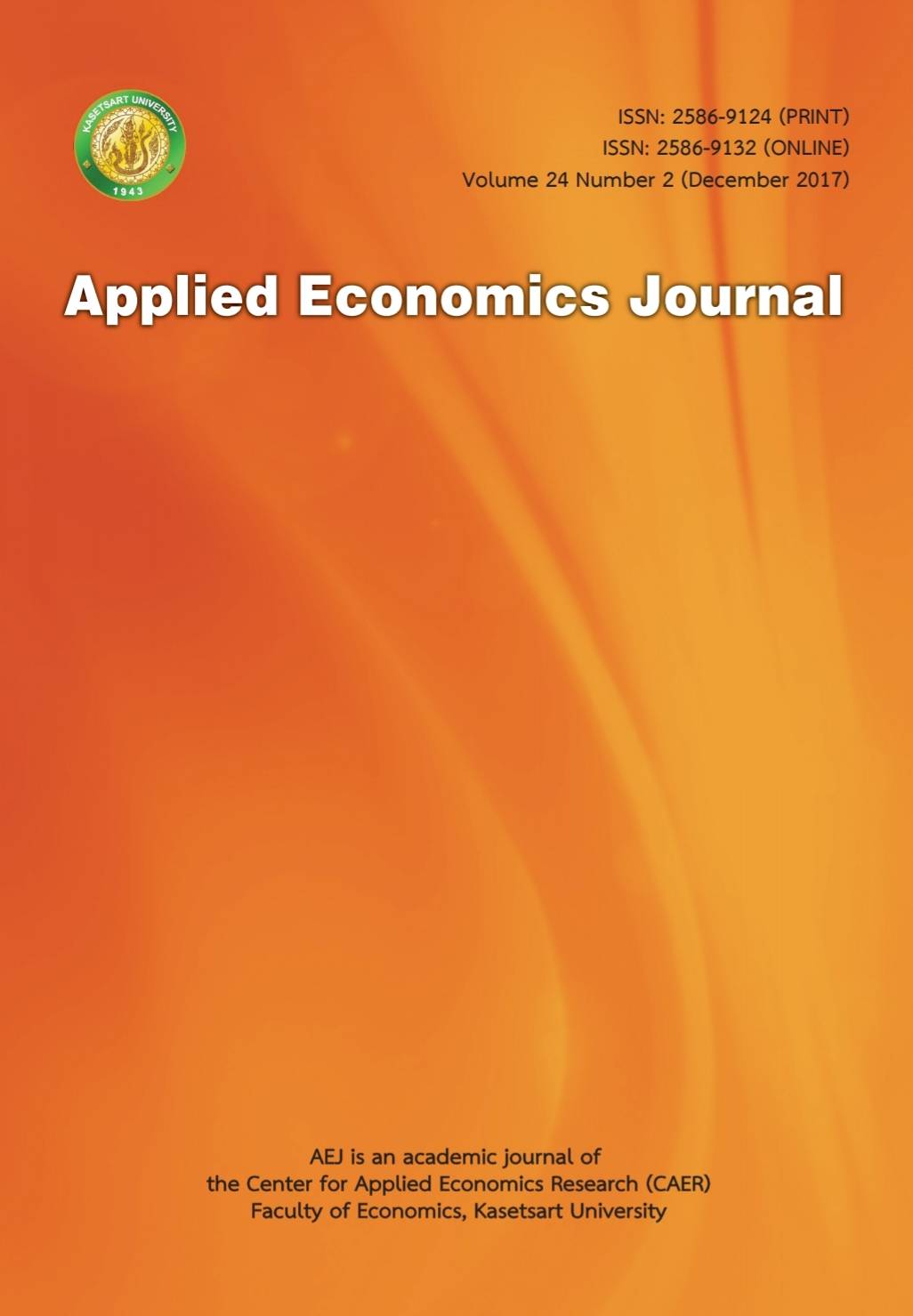The Determinants of Farmers’ Cropping Systems Adoption: A Case of the Upland Farmers in Northern Thailand
Main Article Content
Abstract
Lack of farming knowledge still appears in the remote areas of northern Thailand particularly among upland farmers who often use conventional farming and mono-cropping techniques. The cropping system involves a specialization skill in production from farmers and it does require a large quantity of land to meet and individual farmer’s need. Over the past decade, the forest cover in northern Thailand had dramatically decreased due to demands of land cultivation. As a multi-cropping system may provide advantages to the farmers, intercropping and sequential cropping system can help to minimize crop production and price risks. The system does not only give sufficient economic returns but it also provides a long-term ecological sustainability. This practice is a way to transform upland farmers into becoming more self-reliant. This research aimed to analyze and determine the key factors of farmers’ decision to adopt the multi-cropping practice. Logit model was applied in the study, and was based on a survey of 202 respondents from the highland communities of northern Thailand. The results showed that the famers’ education attainment, attitude toward environmental awareness, and household financial situation are important to their choice of practicing the multi-cropping system. Education and lower debt amount led to an increase in the probability of upland farmers to try the multi-cropping system. The households with larger farms are willing to use part of their available land to do the multi-cropping. An increase in the farmers’ level of environmental concern was also observed to increase the probability of the multi-cropping system being adopted.
Article Details
The paper is published under CC BY-NC-ND, in which the article is freely downloaded and shared in its original form non-commercially and its citation details are identified.


